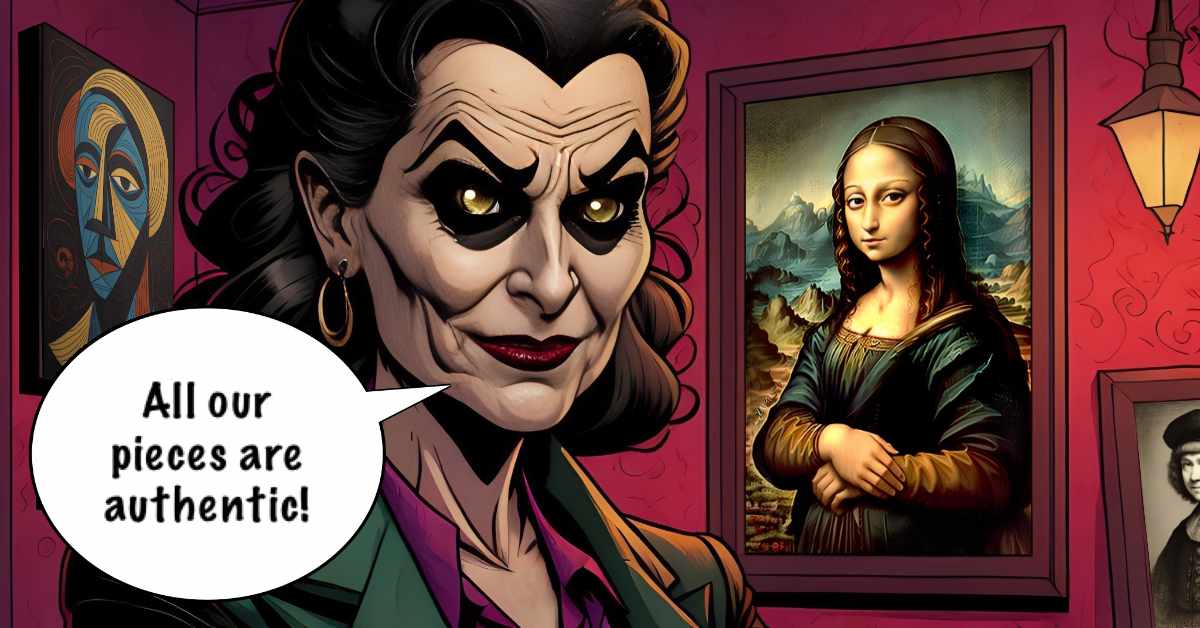Art Buying Alert: Unmasking the Sneaky Tactics Used by Scammers

So, we’ve talked quite a bit about scams targeting artists in some of my previous posts. But sometimes, the game flips, and it’s the art buyers who find themselves in the crosshairs of fraud. Yeah, the art world can be a bit of a wild ride, and it’s crucial to be aware of the tricks up those scammer sleeves.
Let’s dive into the shady side of the art-buying world and uncover some tactics these scammers use to pull one over on potential buyers.
1. Counterfeit Artworks:
Picture this: you find a piece that speaks to your soul, only to discover it’s a knockoff. Scammers love to create fake replicas of valuable artworks and pass them off as the real deal. Don’t fall for it! Authenticate through legit channels or, even better, reach out to the artist directly if it’s contemporary art.
2. Misleading Provenance:
Ever heard the phrase “trust, but verify”? It’s a golden rule in the art world. Scammers cook up false documents about the origin and ownership history of an artwork. Always double-check the provenance through reliable sources before swiping that credit card.
3. Auction Frauds:
Online art auctions can be a treasure trove, but they can also be a scammer’s playground. Watch out for fake auctions, verify the platform’s legitimacy, research sellers, and don’t succumb to pressure tactics pushing you to bid in haste.
4. Donation Scams:
Some scammers disguise themselves as artists or charity reps, soliciting donations. Be the Sherlock Holmes of art buyers—verify the legitimacy of the organization before reaching into your pocket.
5. Forgery of Documents:
Fake certificates, receipts, and appraisals—scammers love playing the document forgery game. Always cross-check with reputable experts to ensure that what you’re buying comes with bona fide paperwork.
6. Bait and Switch:
Imagine negotiating for a masterpiece, only to receive a lesser work upon delivery. Scammers pull this bait-and-switch move. Stay sharp, document everything during the purchasing process, and don’t let them pull the rug out from under you.
7. False Appraisals:
Sellers might fluff up the numbers on an artwork’s value. Don’t be swayed! Get independent appraisals from trustworthy professionals to know the real score.
8. Stolen Art:
Buying from sketchy sources? Watch out! Stolen artworks might be on the menu, and trust me, you don’t want to be caught up in legal drama. Always ensure the legitimacy of ownership.
Stay Viligent, but Don't be Deterred!
Remember, dear art connoisseurs, trust your instincts, do your homework, and if possible, chat up the art pros. Don’t let the fear of scams scare you away from enjoying and supporting artists. Legitimate art sources are waiting for you, and artists truly appreciate your love for their craft. Keep the art vibes alive!
Have you experienced any of these tactics while buying art? What happened and how did you recoup your losses if any? I’d like to hear your stories! Let me know in the comments below! Also, if you’d like any in-depth posts, on these tactics that target art buyers, let me know.






0 Comments